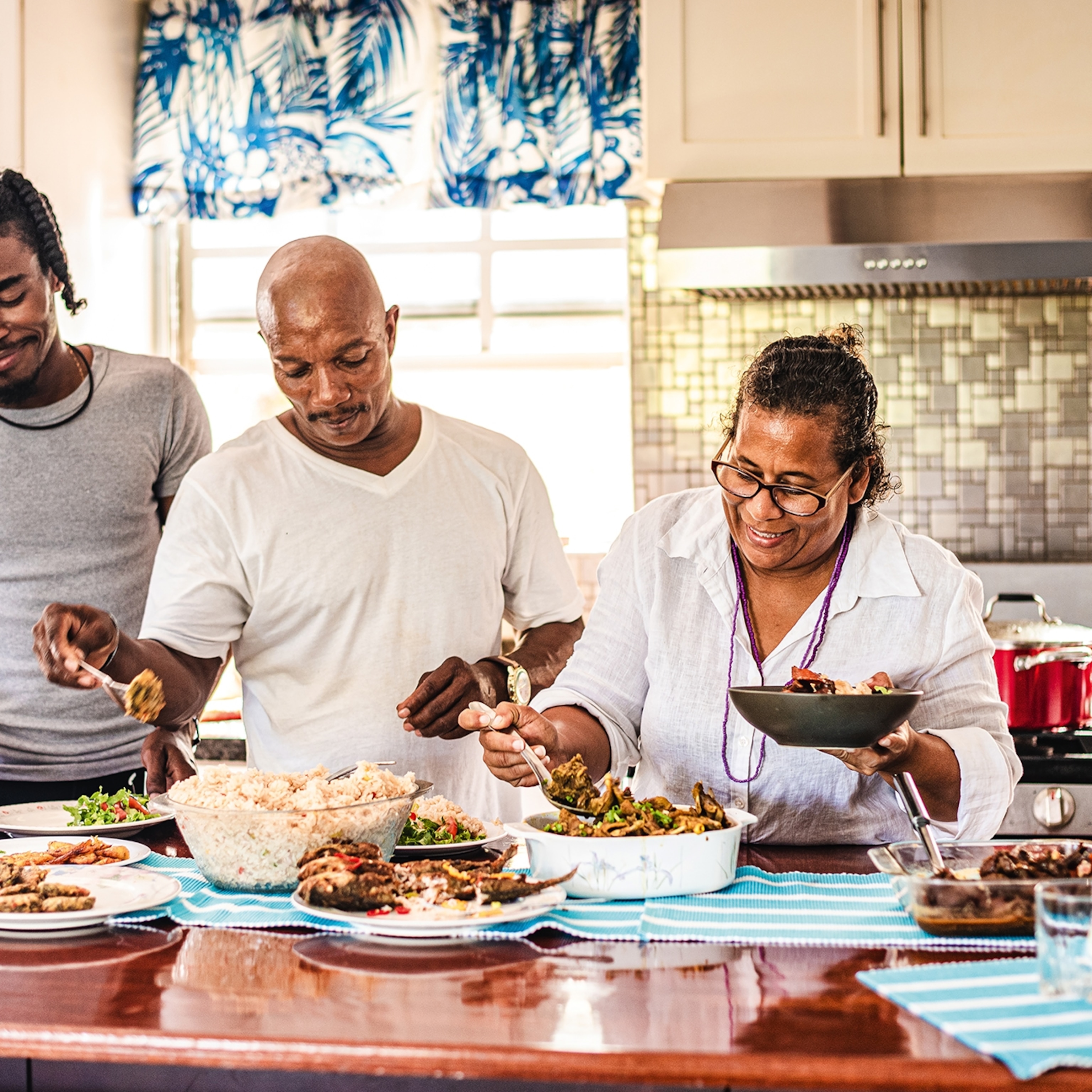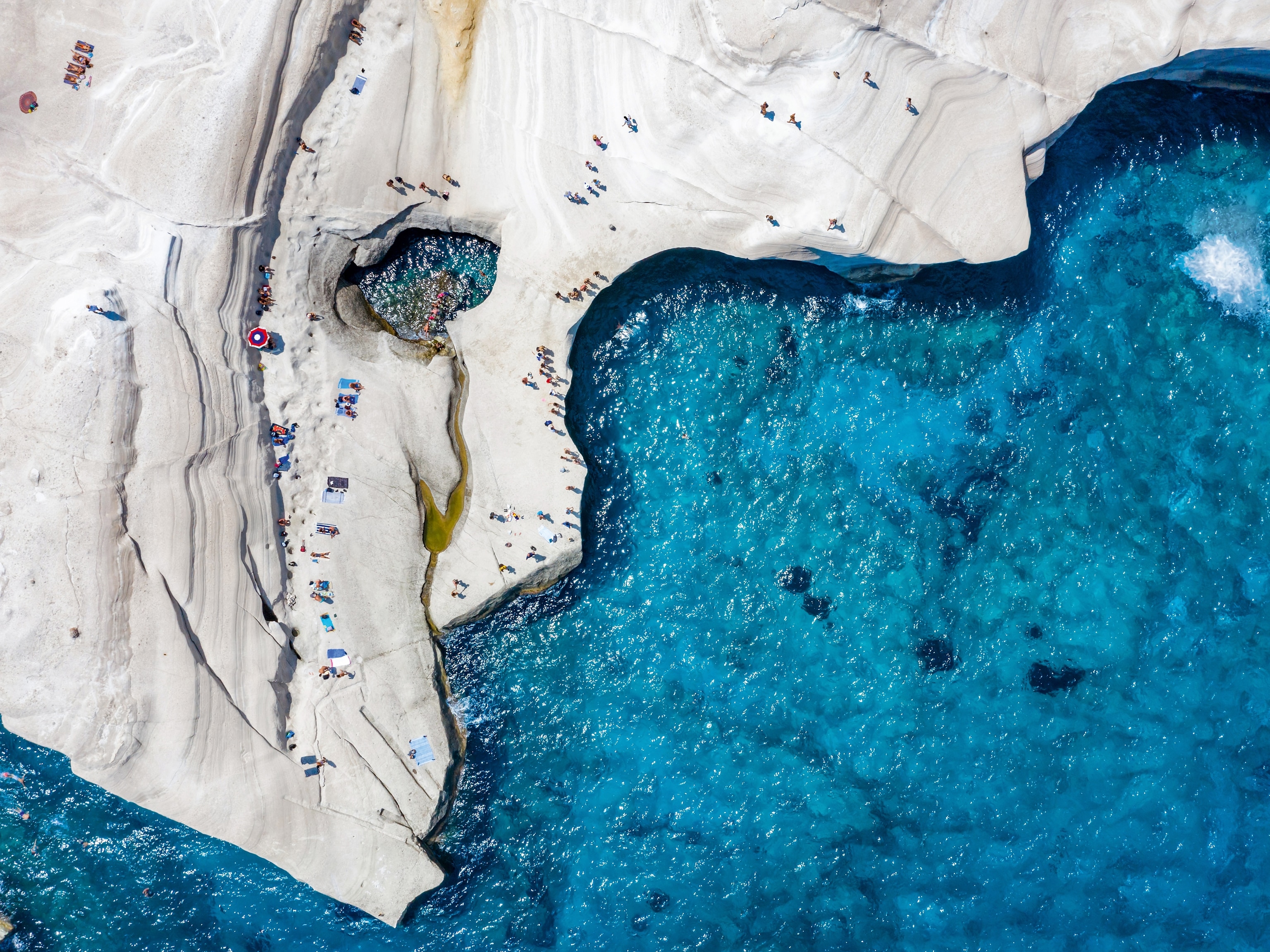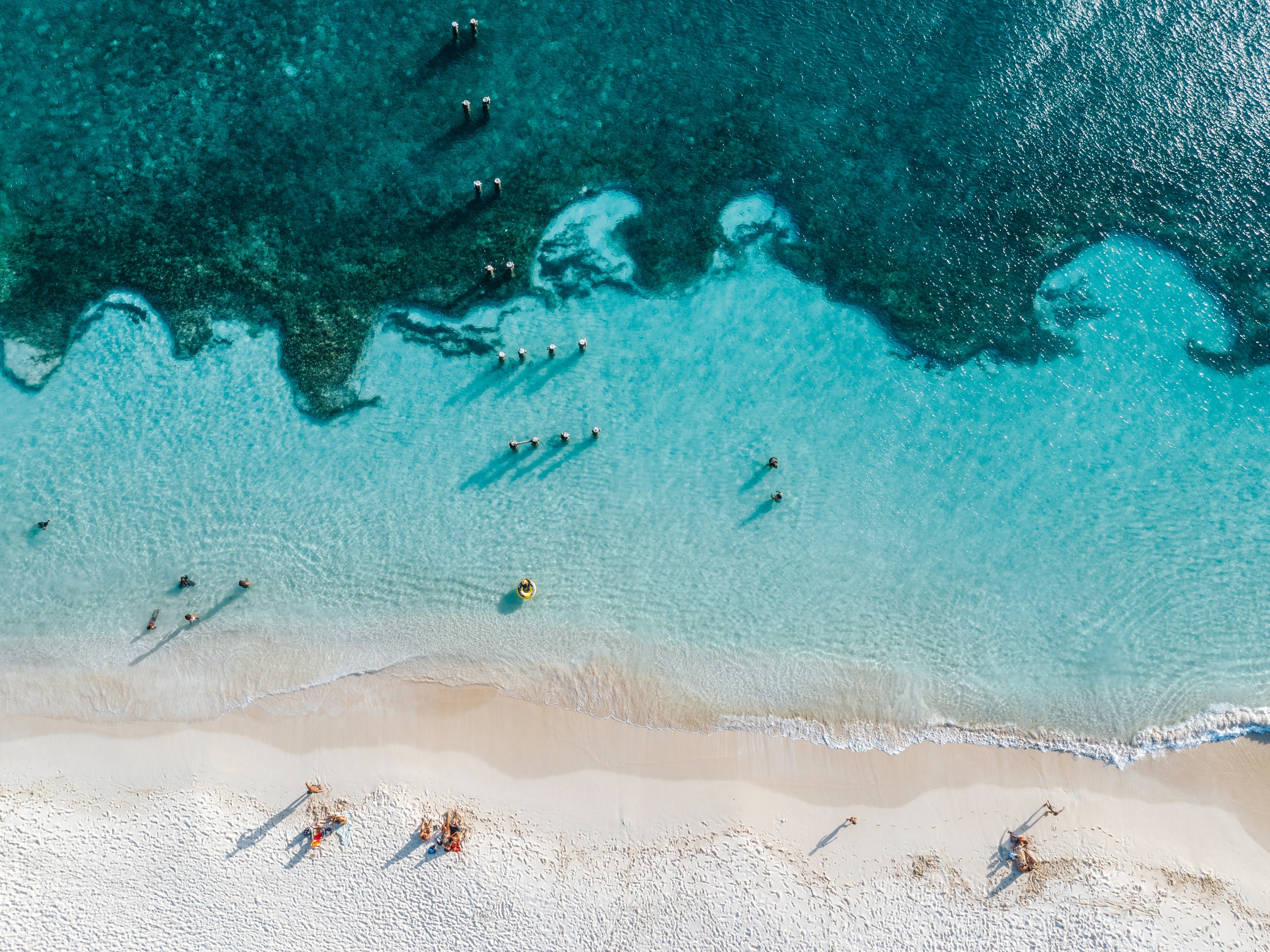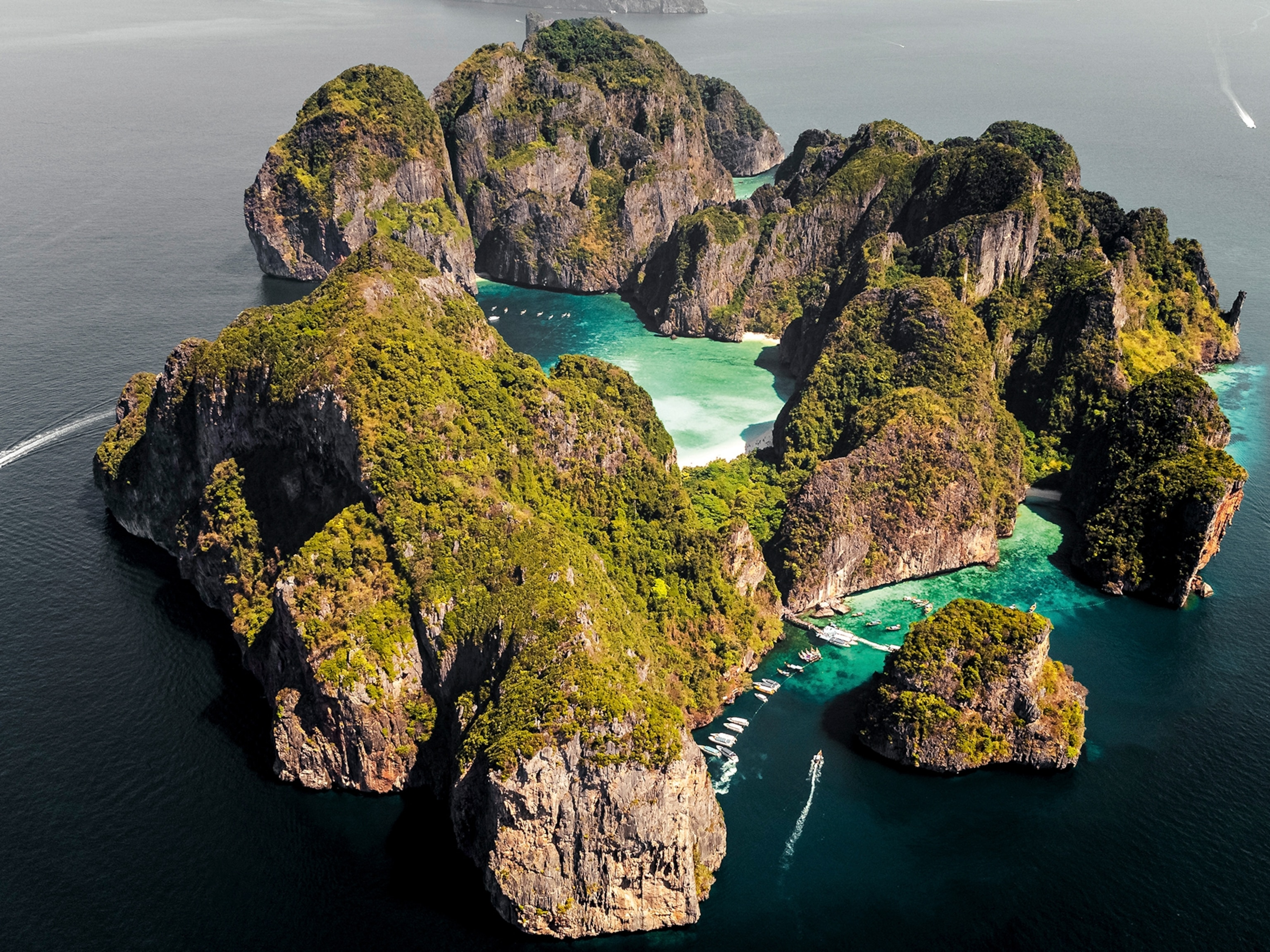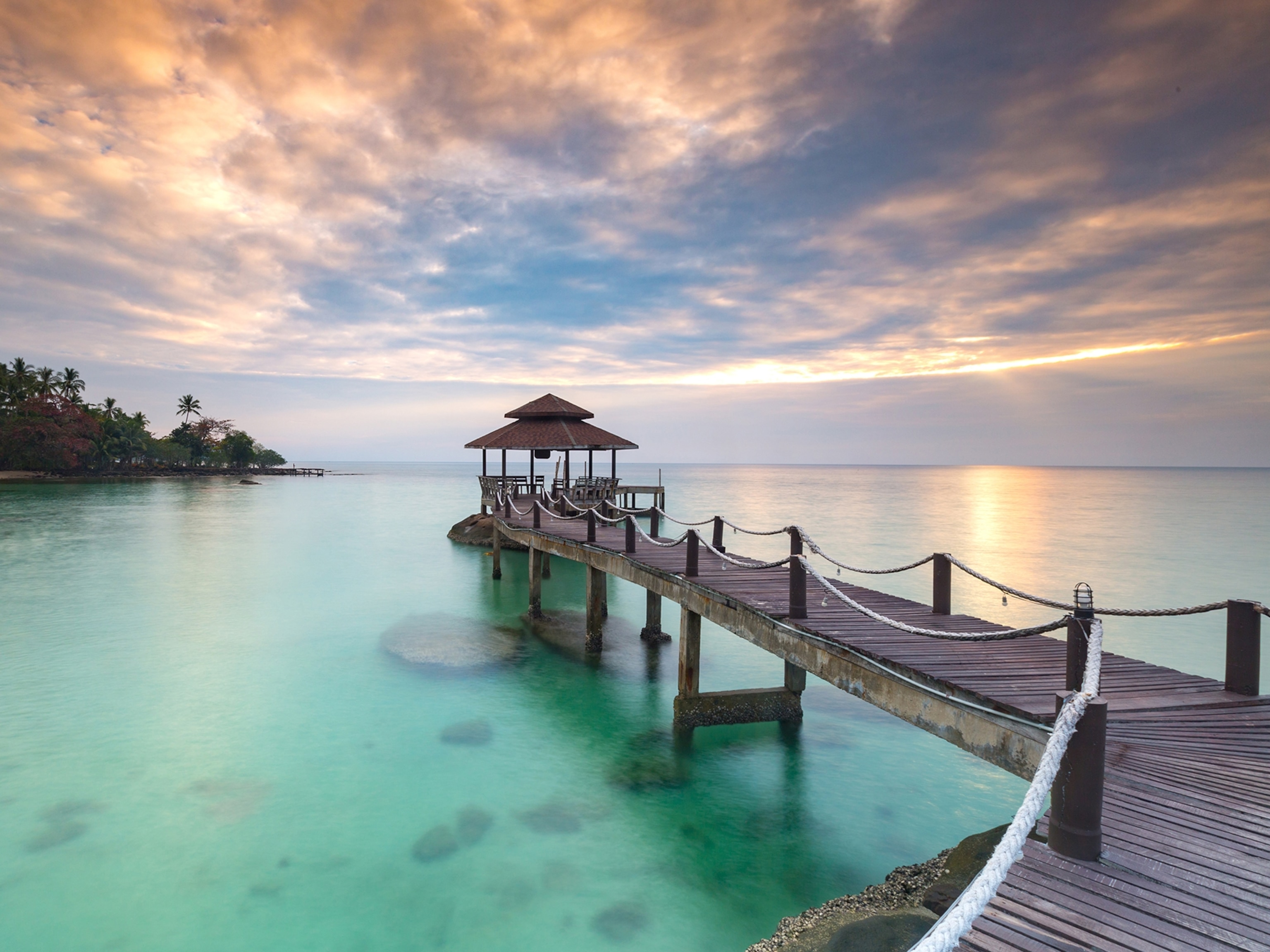Why the best way to see the Pacific nation of Palau is by water
An aquatic adventure in the western Pacific island nation of Palau — home to over 300 islands — highlights the reward of protecting the planet’s marine ecosystems.
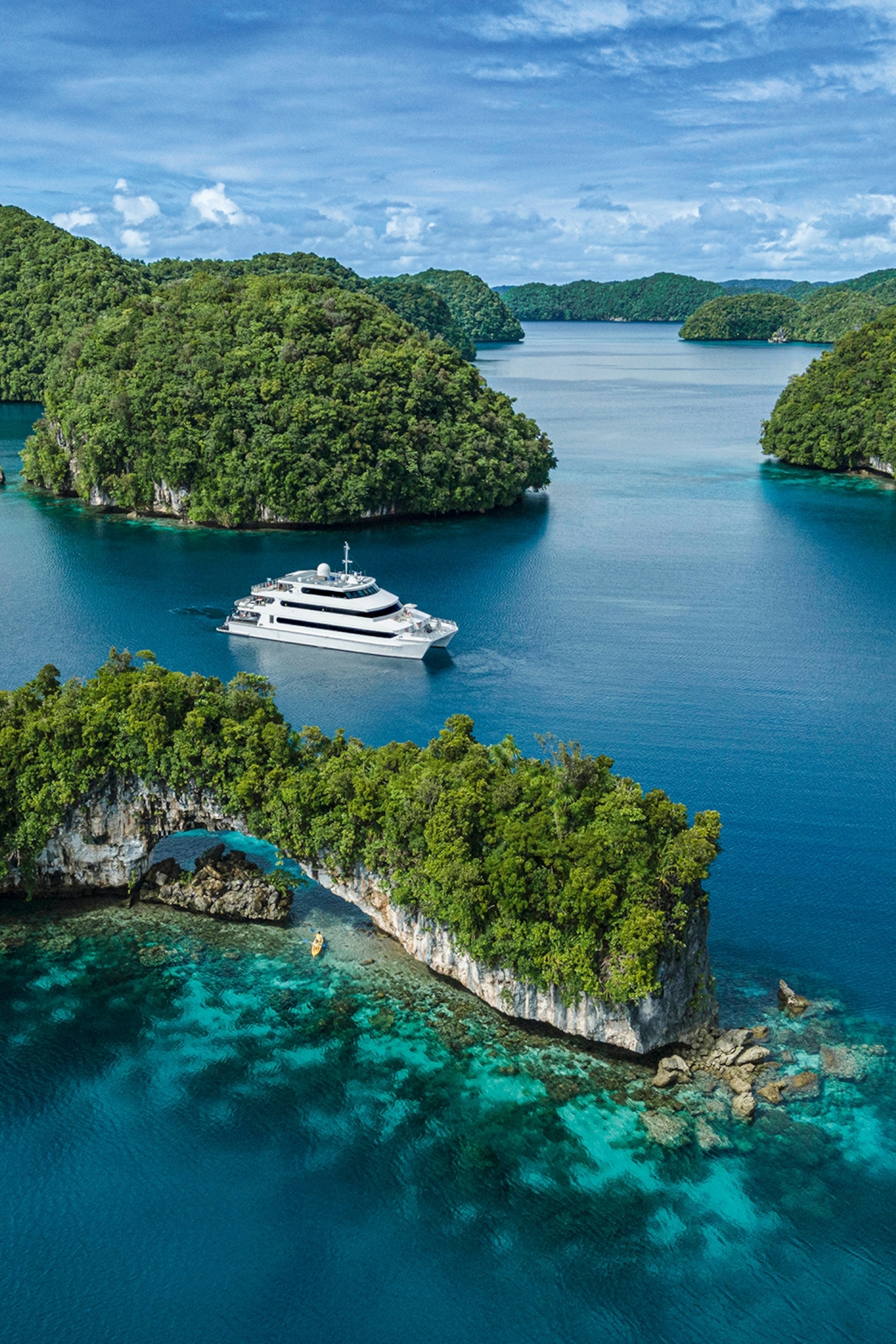
Sinking into the warm, aquamarine water, I feel the tug of the current immediately. Activating my leg muscles to kick against it, I scope out a suitable spot to hook into the reef without damaging it and give my buoyancy control device (BCD) a few pumps of air to lift me (and most importantly, my fins) above the coral. Here I hover, attached to the hook by a coil lanyard, and enjoy the show.
Act one begins with a shiver of reef sharks parading along the edge of the reef just metres from me. A battery of black-striped barracudas enters from stage left, trailed by an enormous Napoleon wrasse and a school of canary yellow and white pyramid butterflyfish, seemingly unbothered by the volume of predators in their midst.
During a brief interlude in shark activity, I spot a moray eel extending its head from a crevice in the reef, flashing its needle-like teeth as it opens and closes its mouth to pass oxygenated water though its gills. Waving my hand over a head of hard coral, a trio of Christmas tree worms suck their colourful fronds into the small burrows they’ve bored into their accommodating host.
After a while we unhook and drift across a sublime slice of the reef festooned with corals in a riot of colours and textures. We pass several hawksbill turtles, while redtooth triggerfish are constant companions, their crescent-shaped tails trailing in the current as they flap their cerulean-blue fins in a mesmerising bird-like motion.
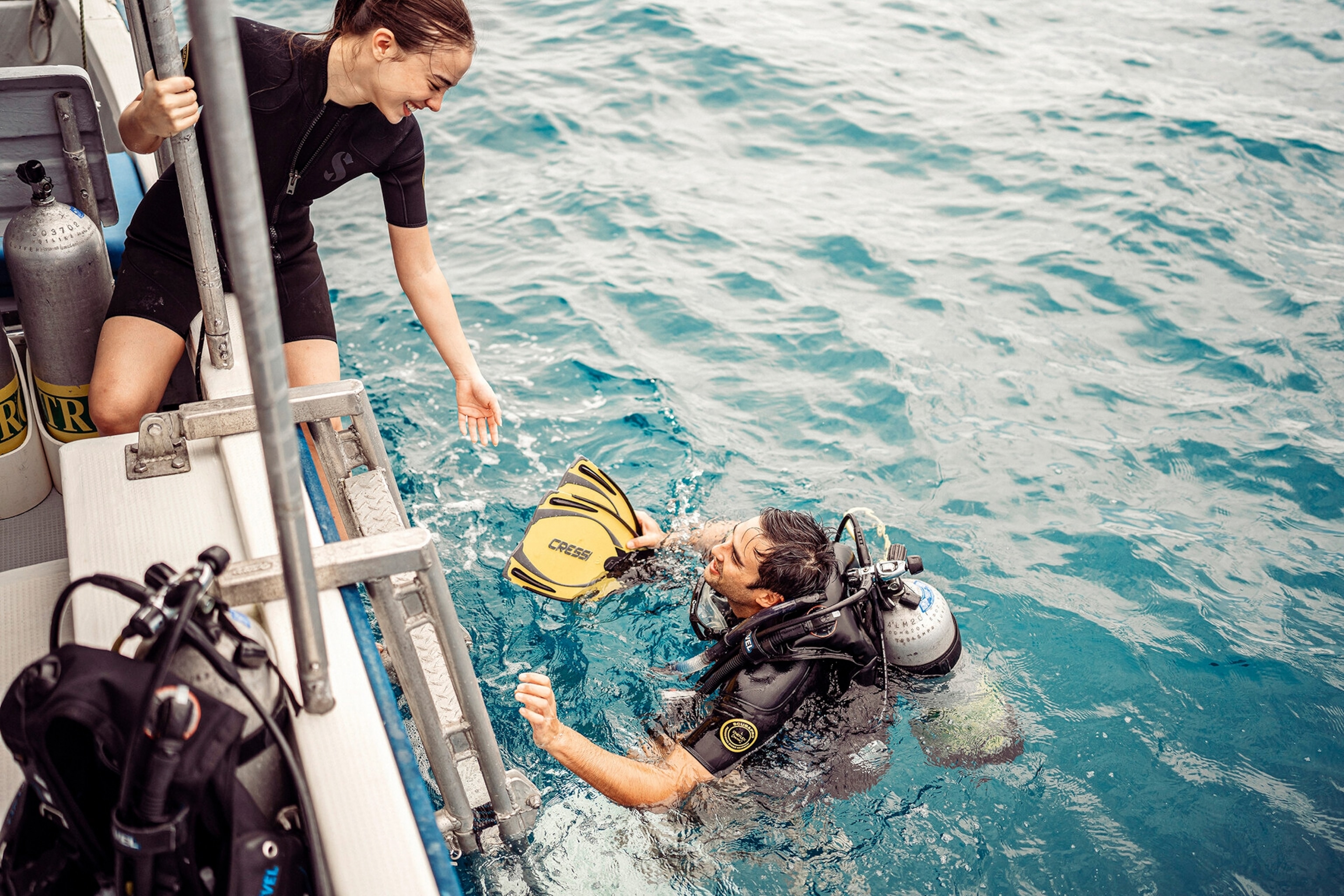
Divers’ delight
Climbing back into the speedboat nearly an hour later, I wonder if I’ve peaked too early by spending my first morning in Palau diving Blue Corner, the pint-sized Micronesian nation’s most famous dive site.
But my second dive that morning, at German Channel, is similarly spectacular. Blasted and dredged out of Palau’s barrier reef in 1908 during its German administration (1899-1914), the artificial channel has been reborn as a hangout for ‘big stuff’ including sharks, turtles and magnificent manta rays. I admire a pair of rays performing a hypnotic courtship dance on my second dive here, twisting and turning through the blue.
The volume and diversity of marine life at both sites is gloriously abundant, and amid the increasing global popularity of scuba diving— PADI alone certifies over a million divers per year — it’s a rare treat for my small group to enjoy both dive spots to ourselves. The lack of crowds is partly due to the timing of my visit in August, the peak of the country’s low (rainy) season. But there’s excellent diving year-round in Palau, which lies outside the region’s typhoon belt, protecting it from most tropical storms.
Another reason for my exclusive access to Palau’s top dive sites is the Four Seasons Explorer, a luxury vessel launched in Palau in 2023 after two decades cruising the Maldives on liveaboard itineraries. Unlike a standard liveaboard with a fixed length of stay, this 128ft, three-deck catamaran with 11 guest cabins offers daily embarkations in its new island home, with speedboat transfers usually taking under an hour to reach its cruising location.
The Explorer spends most of its weekly cruising itinerary in Palau’s UNESCO World Heritage-listed Rock Islands, a jewel box of some 400 emerald jungle-cloaked limestone islets rising from a dreamy palette of blue waters directly south of Koror island, Palau’s main commercial and tourism hub.
With most of the vessel’s Palauan staff currently in training in the Maldives, the 22-person crew on board during my week-long stay are all transplants from the two Four Seasons resorts there. Many are Maldivian, including one of my dive guides, Hassan Ali, who laments the declining quality of coral reefs in his homeland following successive coral bleaching events. “We see more mantas in the Maldives, but the reefs in Palau are in better condition,” he says as we emerge from an incredible wall dive at Siaes Corner on my second day.
Later in the week, at Turtle Cove, I’m captivated by a pair of electric clams emitting a bright white glow from reflective cells in their crimson lips. In Ulong Channel, on day four, I drift over a field of lettuce corals resembling giant green roses. Later that afternoon, I take a short speedboat ride to admire a collection of rock art painted under an overhang on Ulong Island more than 3,000 years ago.
Tucking into a fresh tuna poke bowl for lunch midway through my stay, it occurs to me that the plastic bottle I spot bobbing by the Explorer as we motor to a new anchoring is the first piece of marine debris that I’ve encountered in Palau. “Palauans are very proud of what we have here,” says Eric Whipps, a local businessman who’s holidaying with his family aboard the Explorer during my visit. “You’ll also notice on land that Palau is very clean,” the recently certified divemaster tells me as we snack on slices of fresh watermelon between dives.
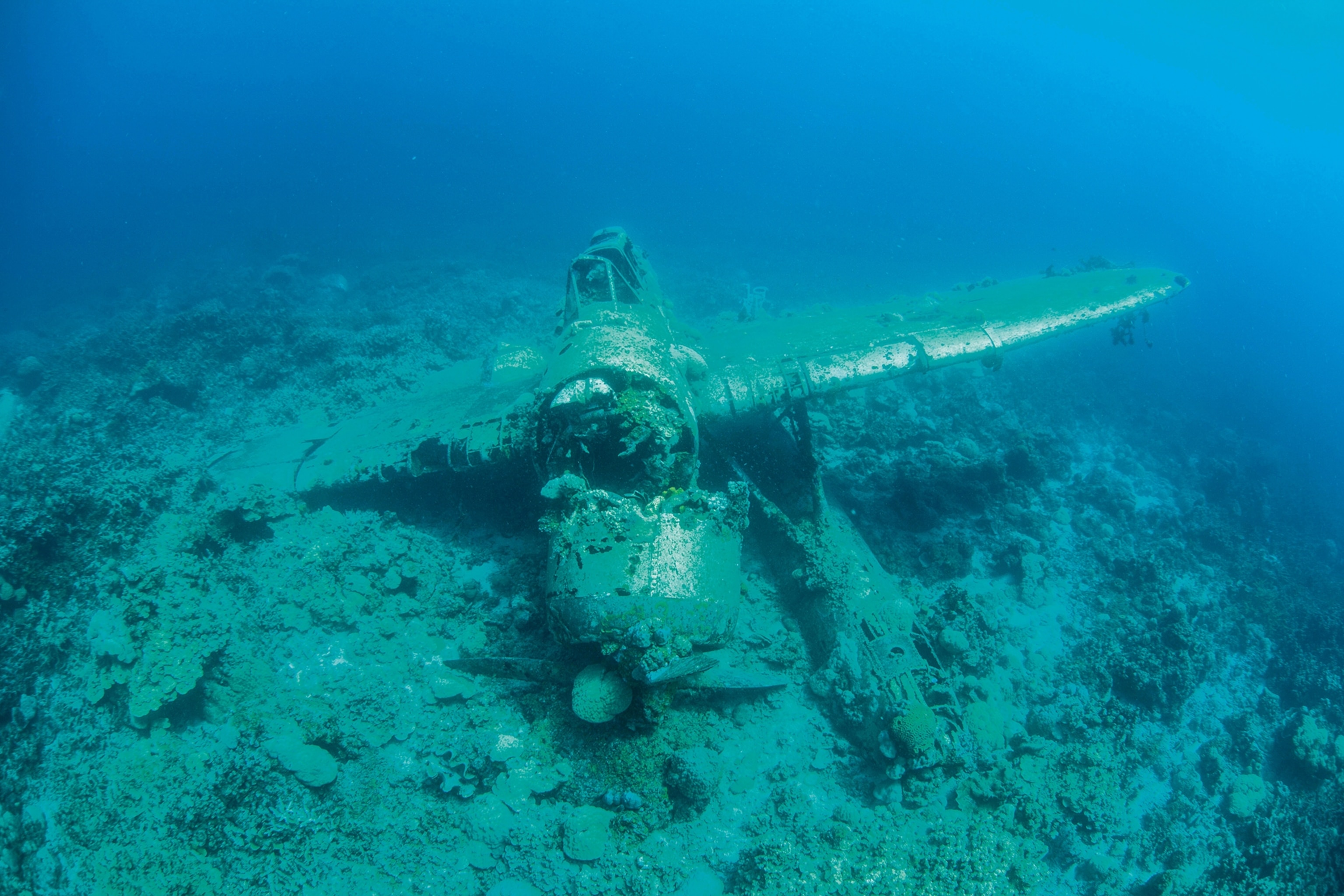
The balance of nature
Thought to have been settled by seafarers from Indonesia or the Philippines about 4,000 years ago, Palau, which celebrates its 30th year of independence in 2024, is a pioneer in environmental protection. In 2009 it created the world’s first shark sanctuary, and in 2017 it launched the Palau Pledge, a world-first initiative requiring visitors to sign a promise to tread gently upon entry. Earlier this year, it became the first nation to ratify the UN’s High Seas Treaty allowing for the creation of marine sanctuaries beyond national boundaries.
A deep respect for the environment and the interconnectedness of humans and nature is a cornerstone of Palauan culture, says Palauan guide Fonzareli ‘Fonzie’ Shickich when he meets me at Koror’s marina one morning to lead me on a tour of Babeldaob, Palau’s lush, sparsely developed main island that’s connected to Koror by bridge. It’s one of several activities that can be arranged during an Explorer stay.
“Everything we do is linked to the tide,” explains Fonzie, who, with his easy smile and curly black hair tied up with a traditional carved-wood hair pin, has a different kind of charisma to the Happy Days character he was named after. “Babies are usually born at high tide — often pregnant women will hold on [if the tide is still coming in] for good luck,” he continues.
“When someone passes away, the tide is usually going out.” The significance of the tide is even showcased on the Palauan flag, Fonzie adds, which features a full yellow moon rising above the blue tide.
As we make the scenic, winding drive to the mysterious collection of stone monoliths at the island’s northern tip, which is just over an hour from Koror, Eric’s earlier comment rings true as we pass yet another ‘keep Palau pristine’ sign. There’s another one at the entrance to Ngardmau Waterfall, about 20 minutes south of the monoliths. Here, Fonzie and I hike down though a steamy tract of lush jungle to cool off under a vast curtain of water tumbling from a volcanic shelf almost 100ft above. A visit to Koror’s small but interesting Belau National Museum — housing artefacts including vibrant glass beads that formed part of a complex traditional exchange system — rounds off our adventure.


Beyond the reef
A serene sunrise hatha yoga session hosted on the Explorer’s sundeck as white-tailed tropicbirds fly by sets me up for another day of diving. Later in the afternoon, I’m shuttled to shore from our anchoring in Airai, at the southern tip of Babeldaob, to meet Palauan local Velma Obak. Dressed in a traditional woven pandanus bra and hibiscus fibre skirt, Velma leads us along a historic stone pathway to a traditional bai (chief’s meeting house). About two centuries old, the thatched-roofed, A-frame wooden hall is one of four traditional bai still standing in Palau.
Here, Velma shares some of the stories behind the paintings covering its exterior. The battle scenes can be misleading, she says, explaining that ancient Palauan conflicts saw minimal bloodshed — wars were won by taking the head of a target on the enemy side. Peeking inside, I notice a fruit bat painted underneath the head of the door. “It’s a symbol of respect, because when a bat lands upside down, it’s in a position of submission,” Velma explains.
Maintaining its rich cultural traditions, both tangible and intangible, hasn’t been easy for Palau. Following Imperial Japan’s 1914 annexation of Palau, Japanese migrants outnumbered Palauans by three to one by 1937. Palau went on to see some of the grisliest battles of the Pacific War fought in its territory, with only about 5,300 ethnic Palauans surviving the carnage.
On a grey afternoon towards the end of my trip, I plunge into the depths of the Rock Islands with cruise director and dive guide Angela Gitaprakasa to explore the Iro, a 469ft-long Japanese Navy oil tanker sitting upright on the sandy seabed, 130ft below the surface. Descending alongside its coral-encrusted bow, we arrive at a gaping hole ripped by an Allied torpedo. Amazingly it wasn’t the torpedo that sunk the Iro, but the ensuing bombing campaign that left holes in the deck. While exploring, we startle an octopus that swiftly shapeshifts into an impressive imitation of a corroded hunk of metal.
Another legacy of Palau’s Japanese era that’s outlasted its three decades of post-war US administration is its cuisine. Fresh local reef fish sashimi is a menu staple in the casual restaurants of Koror, and also makes several appearances on the Explorer’s international menu during my stay. A breakfast highlight, meanwhile, is ‘Kaali’s mama egg scramble’ — a Palauan family recipe shared by the eponymous member of the Explorer’s land-based staff.
Disembarking the Explorer for the last time amid the trumpeting of conch horns, I leave Palau with a new appreciation for raw fish, island life and the power of environmental stewardship.
How To Do It:
China Airlines flies from Heathrow to Koror via Taipei. Average flight time: 18h50m.
Palau International Airport is a 20-minute drive from Koror’s marina. Koror City (more like a small town) stretches along Main Street, home to most of Koror’s hotels and restaurants. It’s possible to explore most of Koror’s attractions on foot, if you don’t mind a bit of a walk. Taxis are also available; pay in US dollars.
When to go
Sun- and manta-seekers may prefer the drier months between November and April, which coincide with the main manta ray mating season. But Palau is a year-round destination, with an average temperature of 28C above and below the water.
Where to stay
Palau Central Hotel, central Koror. Doubles from US$174 (£120), B&B.
Palasia Palau Hotel, central Koror. Doubles from US$190 (£145), B&B.
Stays on the Four Seasons Explorer start at £2,150 per cabin per night, based on double occupancy.
The rate is subject to 32% service charge and Palau goods and services tax (which is subject to change) and includes all meals (excluding alcohol), up to three daily dives or snorkelling excursions with full equipment, non-motorised watersports and some guided cultural explorations and recreational activities. The Explorer is also available for private charters.
To subscribe to National Geographic Traveller (UK) magazine click here. (Available in select countries only).

